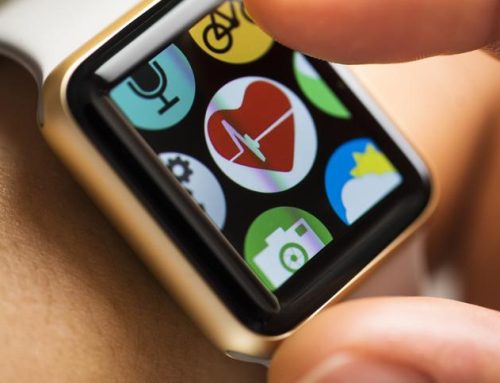Digital transformation has given rise to a new era of medical apps that offer unparalleled convenience and efficiency.
These apps, designed to cater to the diverse needs of patients, healthcare providers, and medical professionals, have become indispensable tools in modern healthcare delivery. As medical apps continue to shape the way we approach health and wellness, one crucial factor emerges: user experience (UX). The success of a medical app hinges on its ability to provide a seamless, intuitive, and engaging experience for users, ultimately contributing to improved patient outcomes and streamlined healthcare processes.
In this article, we delve into the intricate world of optimizing user experience in medical apps. We uncover the fundamental principles that guide the creation of user-centric healthcare applications and explore how a thoughtful approach to UX can revolutionize the way we interact with medical technology. From intuitive navigation to personalized content and stringent security measures, each element plays a pivotal role in enhancing the usability, accessibility, and effectiveness of medical apps. Join us as we navigate the dynamic intersection of healthcare and technology, uncovering the key strategies for crafting exceptional user experiences that set the standard for medical app development.
Understanding User Experience in Medical Apps
User experience, often abbreviated as UX, encompasses the totality of a user’s interactions and perceptions while using an application. In the context of medical apps, UX goes beyond aesthetics and design; it influences how users navigate the app, comprehend information, and engage with healthcare services. In an era where technology empowers individuals to take charge of their health, medical apps must be designed with the user’s needs, expectations, and limitations in mind.
The significance of user experience in medical apps is evident in its impact on patient engagement, adherence to treatment plans, and overall satisfaction. When patients and healthcare professionals can seamlessly interact with an app, the potential for accurate diagnoses, effective treatment, and improved communication is greatly enhanced. As medical apps become essential tools for both remote patient care and clinical decision-making, optimizing user experience becomes a critical endeavor that bridges the gap between technology and healthcare outcomes. Throughout this article, we’ll delve deeper into the key elements that contribute to an exceptional user experience in medical apps, and how they collectively shape the future of healthcare technology.
The Elements of Optimal User Experience
Creating an optimal user experience in medical apps demands a comprehensive approach that takes into account various elements to ensure functionality, accessibility, and engagement. Let’s explore the key components that contribute to a seamless user experience:
- Intuitive Navigation: Medical apps should feature intuitive navigation that guides users effortlessly through the app’s features and functionalities. Clear and logical menu structures, well-organized content, and easily accessible buttons contribute to a smooth user journey. A healthcare app should enable users to find what they need quickly, whether it’s accessing medical records, scheduling appointments, or receiving personalized health insights.
- Personalization and Customization: Tailoring the app experience to individual users enhances engagement and encourages ongoing usage. Medical apps can offer personalized content based on user preferences, medical history, and treatment plans. By providing relevant information and recommendations, users are more likely to feel connected and motivated to actively manage their health.
- Clear and Informative Content: The presentation of medical information in a clear and understandable manner is essential for user engagement. Medical apps should use language that is accessible to a wide range of users, avoiding medical jargon whenever possible. Visual aids, animations, and infographics can help explain complex medical concepts and procedures, enabling users to make informed decisions about their health.
- Interactive Features: Incorporating interactive elements into medical apps can enhance engagement and facilitate communication. Features like chatbots for quick medical queries, appointment scheduling, and secure messaging with healthcare providers foster a sense of accessibility and connectivity. Interactive tools such as symptom trackers, medication reminders, and wellness challenges empower users to take an active role in managing their health.
Designing for Accessibility and Inclusivity
One of the cornerstones of optimizing user experience in medical apps is ensuring accessibility and inclusivity for all users, regardless of their abilities or limitations. Healthcare apps should be designed with a commitment to reaching the widest possible audience and accommodating diverse user needs. Here are some key considerations:
- Usability for Individuals with Disabilities: Medical apps must be designed to accommodate individuals with disabilities, such as visual or auditory impairments, motor skill limitations, or cognitive challenges. Implementing features like screen readers, voice commands, and adjustable font sizes ensures that users with disabilities can navigate the app effectively.
- Compliance with Accessibility Standards: Adhering to accessibility standards, such as the Web Content Accessibility Guidelines (WCAG), is crucial for creating inclusive medical apps. These guidelines provide a framework for ensuring that digital content is accessible to individuals with disabilities. Compliance not only benefits users but also aligns with legal and ethical obligations.
- Multilingual Support: In a globalized world, medical apps should offer multilingual support to cater to users from diverse linguistic backgrounds. Providing information and communication in multiple languages ensures that language barriers do not hinder users’ access to healthcare services and information.
- Consideration of User Context: Healthcare apps should consider the context in which users interact with the app. For instance, users might access the app during a medical emergency or while on-the-go. Designing for various usage scenarios ensures that users can access critical information and services efficiently, regardless of their circumstances.
By prioritizing accessibility and inclusivity in the design and development of medical apps, software development firms can create solutions that empower all users to engage with healthcare technology effectively. In the following sections, we’ll continue to explore strategies and best practices for optimizing user experience in the realm of medical apps.
Streamlining User Onboarding
User onboarding plays a pivotal role in setting the tone for a user’s experience with a medical app. A smooth and informative onboarding process can significantly impact user engagement and satisfaction. Here’s how software development firms can streamline user onboarding for medical apps:
- Clear Welcome and Instructions: When users first launch a medical app, they should be greeted with a clear and concise welcome message that introduces the app’s purpose and benefits. Provide step-by-step instructions on how to navigate the app, access features, and set up their profiles. Clarity at this stage reduces confusion and encourages users to explore further.
- Progressive Profiling: Instead of overwhelming users with a lengthy registration process, consider using progressive profiling. Gather essential information from users gradually, as they interact with different sections of the app. This approach ensures that users can start using the app quickly and allows them to provide additional details later.
- Tutorial and Interactive Walkthroughs: Incorporate interactive tutorials or walkthroughs that guide users through the app’s key features. These tutorials can be presented as pop-ups or short videos that demonstrate how to perform common tasks, such as booking appointments, tracking medications, or accessing medical reports.
- Personalized Recommendations: During onboarding, offer users personalized recommendations based on their health goals, medical history, and preferences. These recommendations can help users understand how the app can benefit them and encourage them to engage with features that align with their needs.
Ensuring Data Security and Privacy
For medical apps, ensuring the security and privacy of users’ sensitive health data is of paramount importance. Users need to trust that their personal health information will be safeguarded against unauthorized access and breaches. Here’s how software development firms can address data security and privacy concerns:
- Strong Authentication and Authorization: Implement robust authentication mechanisms, such as biometric authentication (fingerprint or facial recognition), to ensure that only authorized users can access the app and their personal health information. Multi-factor authentication adds an extra layer of security, enhancing the protection of sensitive data.
- Encryption and Data Storage: Apply encryption protocols to protect data both in transit and at rest. Data should be encrypted as it travels between the app and the server, as well as when it’s stored in databases. Encryption minimizes the risk of data interception and ensures that even if data is compromised, it remains unreadable.
- Compliance with Regulatory Standards: Medical apps must adhere to relevant data protection regulations, such as the Health Insurance Portability and Accountability Act (HIPAA) in the United States or the General Data Protection Regulation (GDPR) in the European Union. Compliance with these standards ensures that user data is handled with care and transparency.
- User Consent and Control: Provide users with clear information about how their data will be used and shared within the app. Obtain explicit consent from users before collecting any personal information. Additionally, offer users the ability to control their data preferences, including the option to delete their accounts and associated data.
By prioritizing streamlined user onboarding and robust data security measures, software development firms can create medical apps that not only provide a seamless experience but also inspire user confidence in sharing their sensitive health information. In the subsequent sections, we’ll continue to delve into strategies for optimizing user experience in the context of medical apps.
Seamless Navigation and Intuitive Design
An essential aspect of optimizing user experience in medical apps is to ensure that users can navigate the app effortlessly and intuitively. Medical apps often contain a wealth of information and features, so a well-structured navigation system is crucial:
- Clear Information Hierarchy: Organize information in a logical hierarchy, placing the most critical features prominently. Use clear labels and icons that align with users’ mental models, making it easier for them to understand the app’s layout and functionalities.
- Intuitive Navigation Patterns: Implement navigation patterns that users are familiar with, such as a bottom navigation bar or a tab bar. These patterns make it easy for users to switch between different sections of the app without confusion.
- Search Functionality: Include a robust search feature that enables users to quickly find specific information, doctors, medications, or health topics within the app. Implement filters and sorting options to refine search results further.
- Minimalistic Design: Strive for a clean and minimalistic design that avoids clutter. Each screen should have a clear focus, avoiding distractions and maintaining a cohesive visual identity.
Personalization and Customization
Medical apps can cater to a wide range of users with varying health needs and preferences. Incorporating personalization and customization features enhances the user experience and encourages greater engagement:
- User Profiles: Allow users to create profiles that store their personal health information, medical history, and preferences. This information can be used to tailor recommendations and content to their specific needs.
- Health Goals and Preferences: During the onboarding process, ask users about their health goals and preferences. Based on their responses, the app can provide personalized recommendations, reminders, and content that align with their objectives.
- Customizable Notifications: Give users the option to customize notification settings based on their preferences. Whether it’s medication reminders, appointment alerts, or health tips, users should have control over the frequency and timing of notifications.
- Progress Tracking: For medical apps focused on fitness, wellness, or chronic condition management, provide tools for users to track their progress. Charts, graphs, and visual representations of their achievements can motivate users and provide a sense of accomplishment.
- Tailored Content: Offer content that is relevant to users’ health conditions, interests, and demographic factors. Personalized articles, videos, and resources can educate users and foster a sense of community within the app.
By designing medical apps with seamless navigation and incorporating personalization options, software development firms can create a user-centric experience that adapts to individual needs and preferences. As we continue exploring the strategies for optimizing user experience in medical apps, the subsequent sections will delve into areas such as accessibility and performance optimization.
Accessibility for All Users
Ensuring that medical apps are accessible to a diverse range of users, including those with disabilities, is a critical component of optimizing user experience:
- Screen Reader Compatibility: Design the app interface and content to be compatible with screen readers and other assistive technologies. Provide alternative text for images and ensure that the app’s interface is navigable through audio cues.
- Text Size and Contrast: Offer options for users to adjust text size and contrast settings according to their preferences. High contrast modes can aid users with visual impairments, while larger text sizes enhance readability for all users.
- Voice Commands and Gestures: Integrate voice command functionalities and gesture-based interactions. Users with mobility impairments or conditions affecting fine motor skills can navigate the app effectively using their voice or simple gestures.
- Captioning and Transcripts: If the app contains video or audio content, provide captions and transcripts to make the content accessible to users with hearing impairments. This also benefits users who prefer reading over audiovisual content.
Performance Optimization
A seamless user experience in medical apps goes beyond just the interface; it also involves the app’s performance and responsiveness:
- Loading Speed: Optimize the app’s loading times to minimize waiting for users. Slow loading times can frustrate users and deter them from using the app consistently.
- Efficient Data Usage: Medical apps often require real-time data updates. Implement techniques to minimize data usage, especially in cases where users may have limited data plans.
- Crash Prevention: Rigorously test the app to identify and fix potential bugs and crashes. Users rely on medical apps for accurate information and timely alerts, making stability and reliability paramount.
- Regular Updates: Continuously update the app to improve its performance, fix bugs, and introduce new features. Regular updates show users that the development team is actively engaged in enhancing the app.
By addressing accessibility concerns and optimizing performance, software development firms can elevate the user experience of medical apps, making them more inclusive, efficient, and dependable. As we conclude our exploration of optimizing user experience in medical apps, remember that a user-centered approach is key to creating technology that truly benefits individuals seeking health and wellness solutions. If you’re looking for user-centric medical app developers, consider reaching out to New York Software Developers for their expertise in creating innovative and impactful digital solutions.




